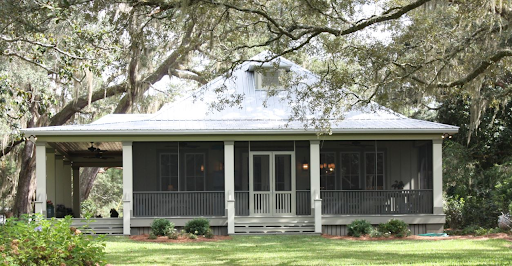
What Climates Does ICF Work Best In?

There are a lot of building materials that only work in certain climates. Some materials have terrible insulation in cold climates, while others absorb heat in hot climates. Some materials would blow apart in severe wind, while others would grow mold in wet climates.
One of the greatest features of insulated concrete forms (ICF) construction is its ability to work in all climates. By the end of this article, you will understand the magnitude of ICF’s weather resistance and how ICF can offer solutions that many other materials don’t even come close to matching, no matter the climate you’re building in.
Features and Benefits
Insulated concrete forms, or ICFs, are composed of concrete sandwiched between two layers of insulated foam. Fox Block’s ICFs are customizable to a number of shapes, sizes and concrete core thicknesses, working with all exterior or interior finishes, including EIFS, stucco, brick, stone and fiber cement.
They provide extra strength from the elements, can reduce a building’s heating and cooling cost dramatically, and offer unparalleled comfort and quiet by eliminating moisture, intrusion, managing airflow and minimizing the need for sound mitigation. One of the best features? It can be installed, and perform well, in any climate.
Cold Weather
In certain climates, many materials cannot be installed while the weather is cold because of freezing temperatures. Fortunately, ICF can be poured and cured during any time of year. How? The forms insulate the concrete and enhance the curing process.
The top of the forms, or exposed concrete areas, will need to be covered temporarily with insulation to prevent the exposed concrete from freezing, but this is the only area that needs covering. Fox Blocks projects can be constructed any time of year with no worry of delay due to cold weather.
And once cured, the durability is unbeatable: ICF is stronger than both steel and wood, so winter storms don’t stand a chance.
Hot Weather
A break in a building’s envelope can create a thermal bridge, allowing moisture and air to infiltrate a wall system. This often occurs near junctions between the wall, floor, roof, windows, doors, around holes for cables and pipes, and penetrations by studs.
One way to stop thermal bridging — and provide a thermal barrier to control heat, moisture and airflow — between the exterior and interior of your building is by choosing ICFs.
The Fox Blocks ICF wall system, with built-in continuous insulation and moisture/air barriers, stops thermal bridging. Even in hot temperatures, Fox Blocks is easy to install and code-compliant, providing good Indoor Environmental Quality (IEQ) and Indoor Air Quality (IAQ) while maintaining the full effective R-value of 23 for the entire lifecycle of your building without the concerns of mold, mildew or rot.

Wet Climates
If you live near water, in a wet climate, or in an area prone to flooding and hurricanes, ICFs can provide protection. They do not promote mold or mildew growth after flooding or due to moisture from salt spray or humidity. This saves you maintenance and repair costs after any wet storm.
In the Chesapeake Bay, the summers are warm and muggy, the winters are very cold and windy, and it is wet and cloudy all year round. The Miltons, talked about in-depth here, wanted an affordable and aesthetically-pleasing customized home that could hold up against the variable, yet always wet, Chesapeake Bay area.
They needed a home that could stand against the elements while also being energy efficient, safe and highly comfortable. How did they do it? With Fox Blocks walls.
Wind and Storm-Resistance
Using ICFs for your building helps you create a wind-resistant structure and makes it a safe haven from tornadoes and hurricanes. The steel-reinforced concrete, which can cure stronger than normal concrete because of the foam insulation, can withstand winds over 200 mph and projectile debris traveling over 100 mph.
When tested for axial capacity, wall bending stiffness, lateral capacity and deflection, third party research shows that ICF walls are stronger versus typical walls with wood and steel studs.
Using fortified building materials and methods is a smart decision in protecting your building from everything Mother Nature can throw at it.
Energy Savings
Utilizing high thermal mass building materials, like Fox Blocks ICFs, in passive wall design contributes significantly to a more energy-efficient building. This is because high thermal mass products can stabilize temperature shifts within the building by absorbing and storing heat energy.
For example, in summer and warm climates, thermal mass walls absorb cold air in the evening and store it within the mass of the wall. When it gets really warm, the walls will stay cooler longer and keep the home’s interior cool and free of overwhelming heat.
Buildings built with ICF need 32% less energy to cool and 44% less energy to heat when compared to similar wood-framed buildings. If you were to pair ICFs with a heat pump and solar panels, you’d be well on your way to an average electric bill of near-zero every month.
The Best Climates for ICF? All of Them.
Fox Blocks ICF and its all-in-one wall assembly combine five steps into one: structure, vapor retarder, insulation, air barrier and attachment. While it hastens the project delivery by eliminating the need to coordinate specific trades, it can also be installed in any climate and withstand any climate’s elemental consequences.
It can survive cold, heat, wind, water and severe storms. If you want your building to stand the test of time, choose ICF.
If you want to learn more about how FoX Blocks is installed, check out our Integrated Learning Center. It includes courses and videos about installation and a series on ICF product knowledge.
Want to learn more about ICF or interested in collaborating on a project? Check out Fox Blocks product offerings or contact us today.


